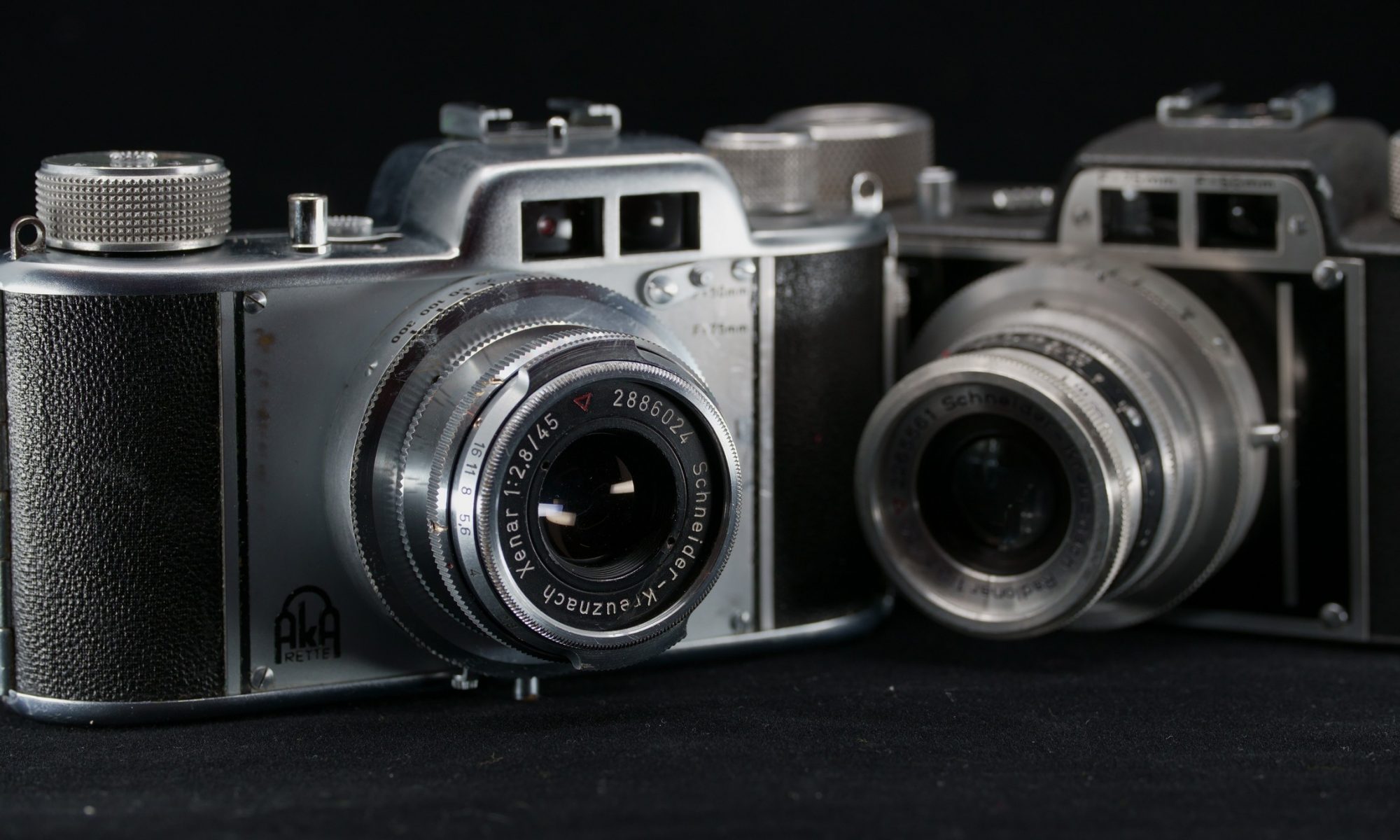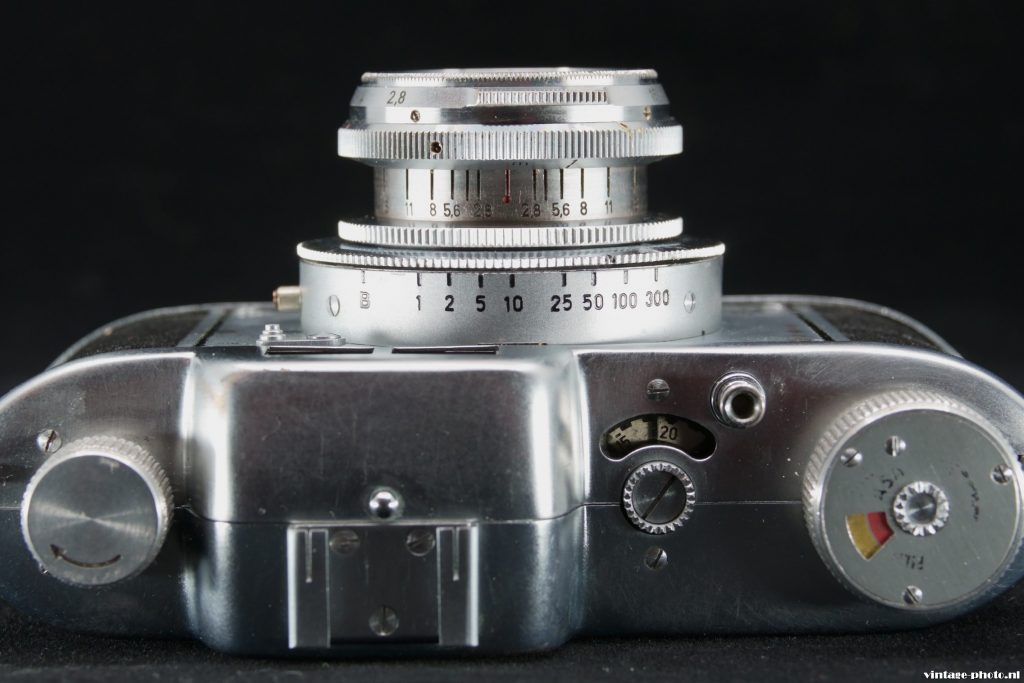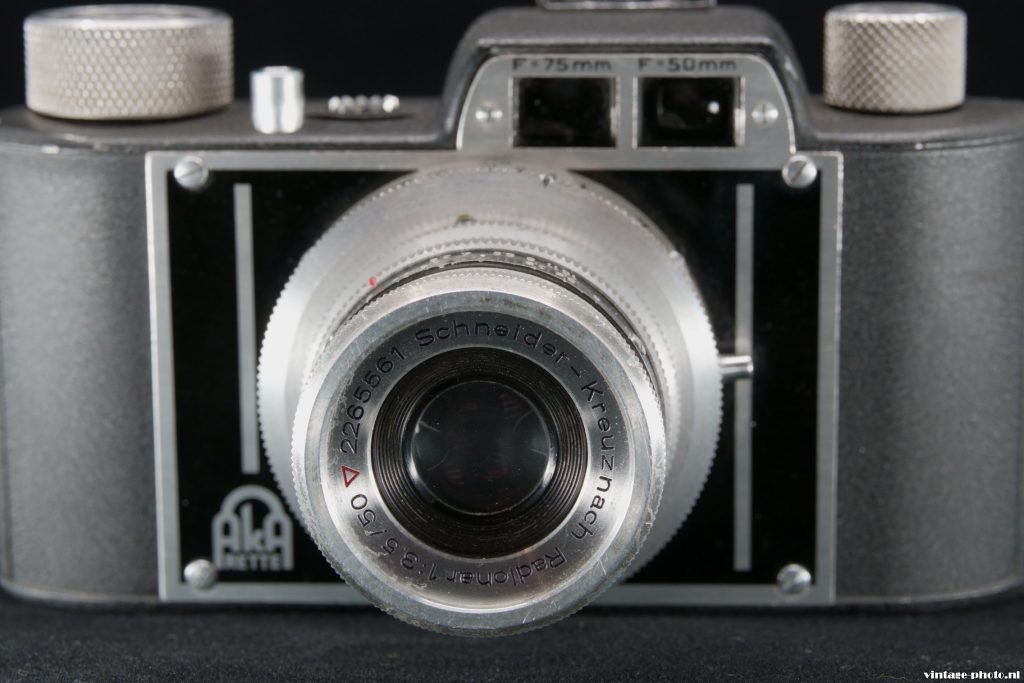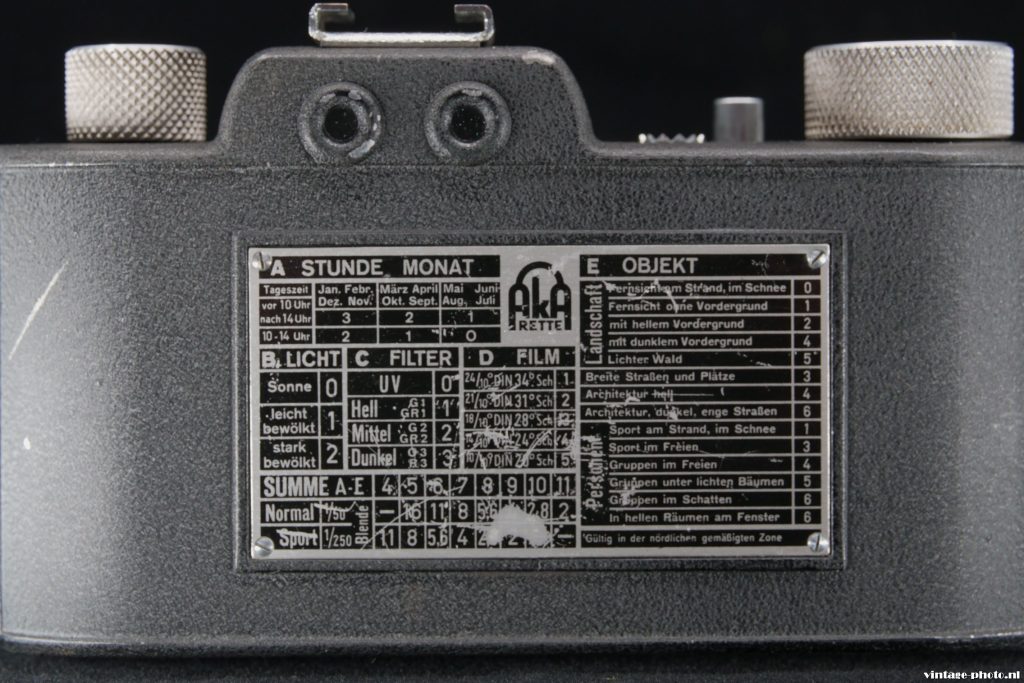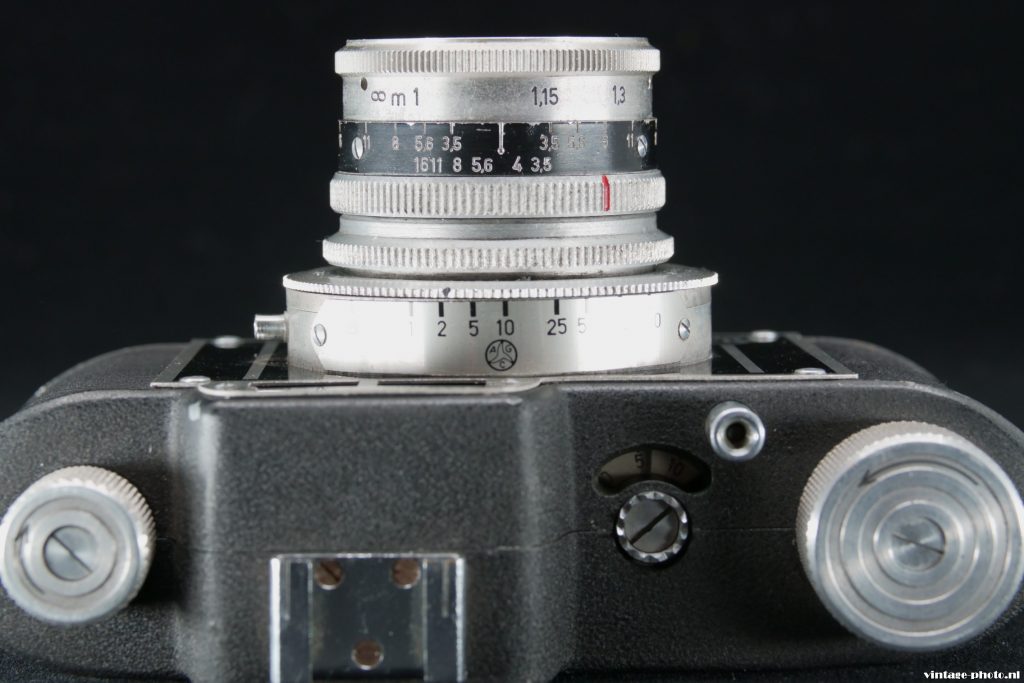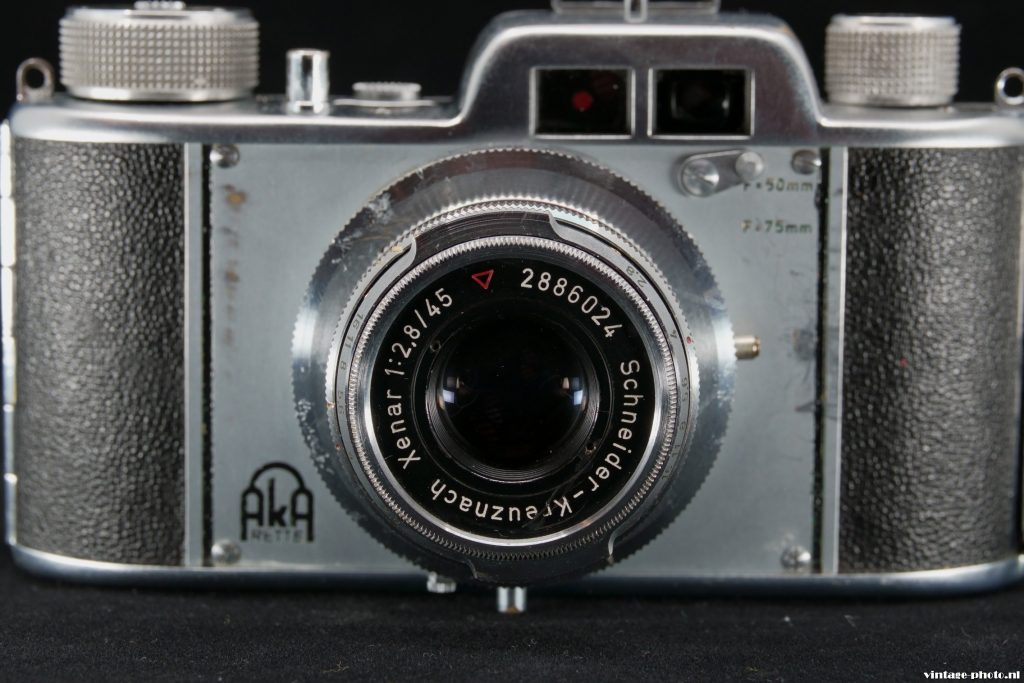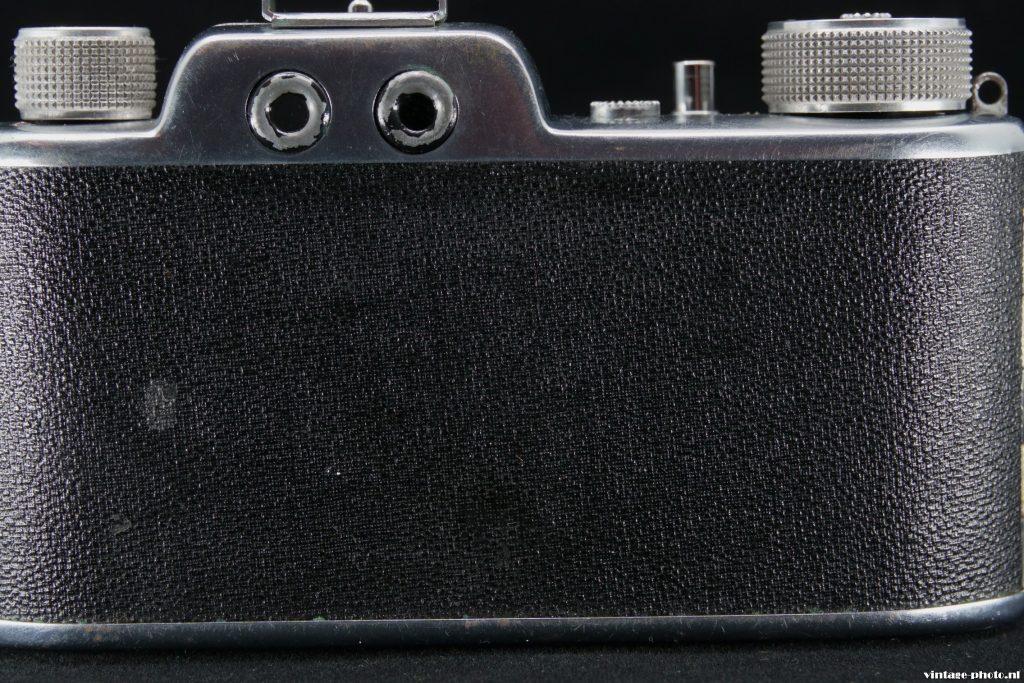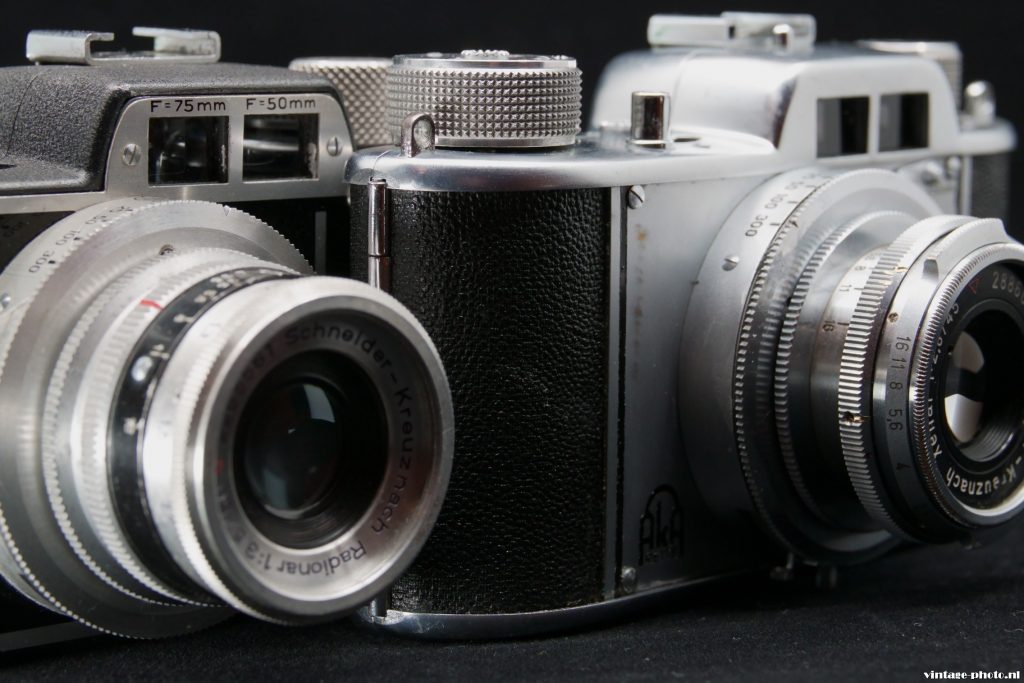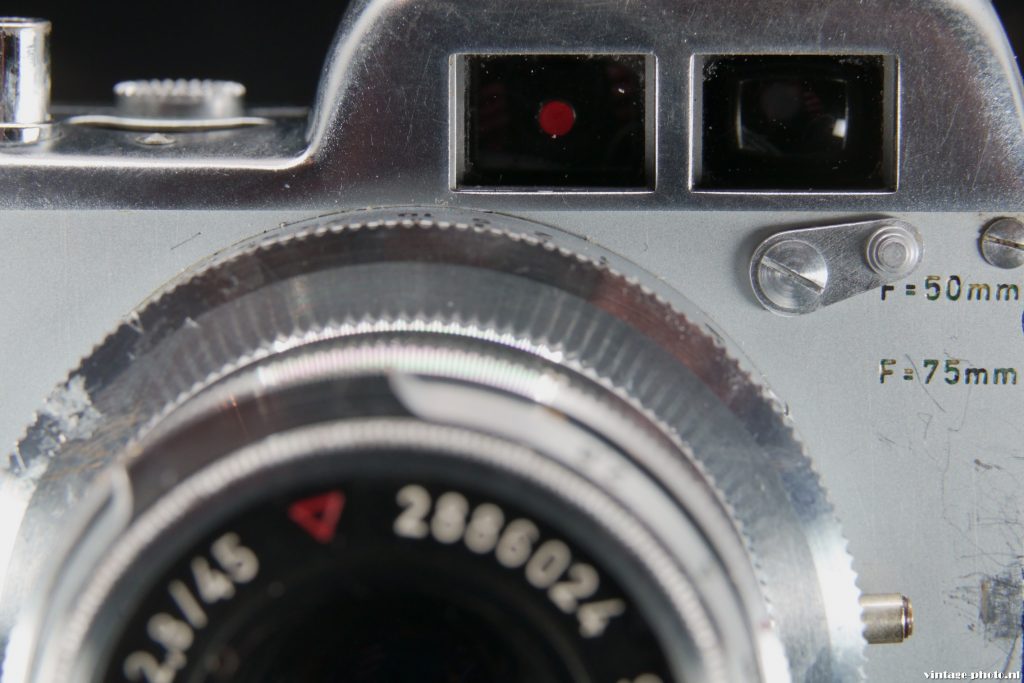A less known German brand is Apparate & Kamerabau that produced one of the most popular and affordable cameras during and after WWII: the AkArette. A sturdy little piece of typical craftsmanship made in a difficult time and beloved of its tiny dimensions.
What do we know about AkArette? Yes, it is a quality German 35mm viewfinder camera with interchangeable lenses, made by Apparate & Kamerabau (AkA). It was formed by brothers Eugene and Max Armbruster in February 1946 and camera production continued until the mid 1960s. The main characteristic for the AkArettes is the presence of two viewfinders, a 50 and a 75mm focal length. So no extra viewfinders needed in the cold shoe. Also in the interchangeable lenses there is no leaf shutter, but it is attached to the mount on the body. Most leaf shutters are part of the lens, they look like aperture blades, set between the lenses.
There were three versions of the Akarette from which two are shown in this review, the AkArette 0 and the II. They both took 24x32mm images and were produced between 1947 and 1954. The 0 bakelite version is a sturdy, black, retro looking pocket camera. But nevertheless packed with lots of interesting functions, like an advanced automatic film counter, a flash sync through a pc – port and a mechanical self timer Opening the back is done by unscrewing two little bolts. An all metal inside construction for inserting and winding the film supports the well designed camera. On the back you can choose the focus viewer and read the ‘manual’ about using which aperture in witch common situations, like on the beach, in the snow, architecture, group pictures, portraits and so on. The interchangeable lenses can be unscrewed with a large ring from the simple mount. Lenses can be inserted and than locked by the same ring. There were 8 lenses available, mostly from Schneider Kreuznach, varying from 35mm, 45mm, 50mm and 75mm in different speeds (the best was the remarkable fast Xenon 50mm F2.0). Also ISCO made one lens for the AkArette, the 50mm F2.8. On the model shown you see the common Schneider Kreuznach Radionar 50mm F3.5 lens. For the 35mm and 45mm there were also additional viewfinder options that could be placed in the cold accessory shoe.
The Akarette II dates from 1950 and had a Prontor-S leaf shutter with similar speeds from B, 1-1/300s. The AKArette II had a switchable viewfinder for 50mm and 75mm lenses, operated by a lever or a knob (depending on the version). Using one viewfinder automatically obscures the other one. It is an all metal chrome model, heavier and bigger and has also a memory setting wheel for film type/ASA settings. Not in any way coupled to a light metering system which was not yet available in most camera’s. On my model i have the very high quality Schneider Kreuznach Xenar 45mm F2.8,which back in those times was considered a top of the notch lens. The model has the same functions as the previous 0 and I model. More than 50.000 pieces were sold, which was considered a milestone on the consumer market.
Although the AkArettes were popular (and a lot cheaper than e.g. the famous Leica series), the firm never managed to become a solid market player. They did invent also the AkArex rangefinder series, but they never got into production. The brothers were inventive, but their innovations came at such a high price that only very few were sold. The most remarkable was the View-Master Stereo Color Camera, but also that ambition got lost due to the too high market price. And so the friendly AkA logo for history is mainly associated with the unique AkArette series that proved again the ingenuity of the German camera market.

